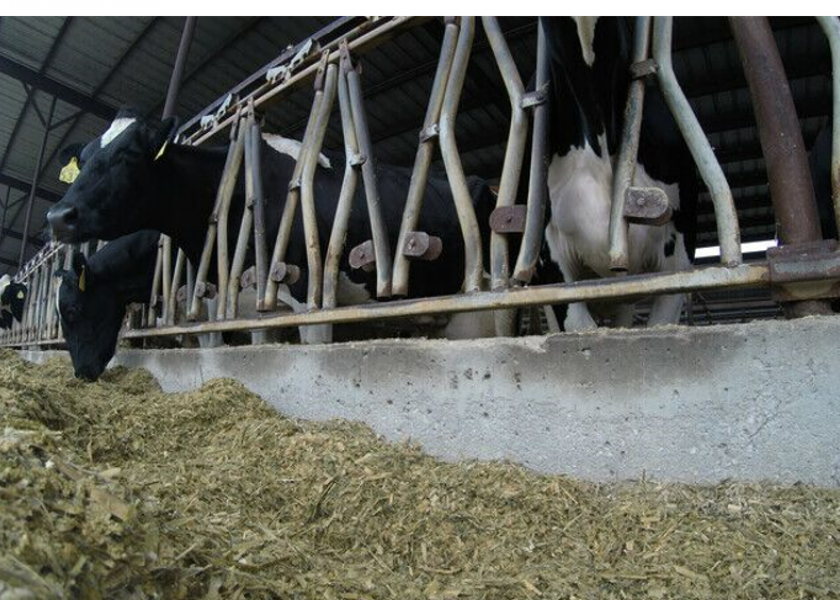Hidden Sources of Feed Shrink that Affect Cow Performance

There are the usual sources of shrink out of bunkers and commodity barn bays—excessive spoilage, wind, birds and rodents.
But there are some sources of shrink you might not think of, but that can be causing substantial losses in terms of feed used, ration formulation and poor performance.
Among these hidden sources are:
• Poor sampling technique. Pulling just one feed sample from the face of a corn silage bunker can lead to a false assessment to what quality of the feed being stored, says Pedro Melendez, a veterinarian and dairy specialist with the College of Veterinary Medicine at the University of Georgia.
For example, starch levels in a feed pile of corn silage can vary. In one case, Melendez found starch levels varied from a low of 25 percent to a high of 35 percent. The average of the pile was 31.1 percent. If you simply sample once and happen to pick the area where starch is 25 percent, you will be underestimating the feed value by 6.1 percentage units. “If we use this number for the feed formulation, we will most likely have to add more corn grain to the diet, unnecessarily, to achieve the desired starch value of the diet,” he says.
“If we also make a second mistake of only using this single sample as an indicator of the starch content of the entire silo, we will multiply this error several times, meaning an unnecessary extra cost in the purchase of corn grain,” Melendez says. To avoid the error, it is best to take 10 samples from the face of the pile, mix and homogenize these samples, and then test a composite sample to get an estimate of the true average of the feed.
• Frequency of sampling. Feed in the pile can also vary front to back, as different areas of fields and different fields are harvested and ensiled. Melendez says at least monthly nutritional analysis of haylage and silage should be considered. “Larger farms (more than 1,000 lactating cows) should consider a weekly sampling to correct for nutritional variations,” he says.
• Maintenance of scales. “The precision of the scales both at the arrival of the trucks, and at the time of the preparation of the diets, are important,” says Melendez. “Adequate maintenance of truck scales and mixers must be made to avoid unnecessary losses.” For example, monensin might cost $8 to $9 per pound. Even minor inaccuracies in mixer scales can lead to large under- or over-feeding losses over the course of a year.
• Feed moisture. It is critical feed be stored at the correct moisture to avoid losses. Grains and concentrates need to be at least 86 percent dry matter. Higher moisture levels risk fungal and mycotoxin production, leading to feed contamination and poor performance. “Fungal and yeast contamination can lead to excess heat production of feed that can even lead to the development of fires,” Melendez says.
Forages should also be stored at proper moisture levels. Storing forages too wet can lead to hot spots, decreasing feed quality, lower intakes and reduced feed efficiency.
• Pests. Preventing birds and rodents for gaining access to commodity bays is also critically important. Not only do these pests consume feed, their droppings can contaminate feed with diseases such as leptospirosis, salmonella, avian mycobacterium, E. coli and others. One farm in Missouri had an outbreak of Salmonella Dublin traced to raccoon feces in contaminated grain.







